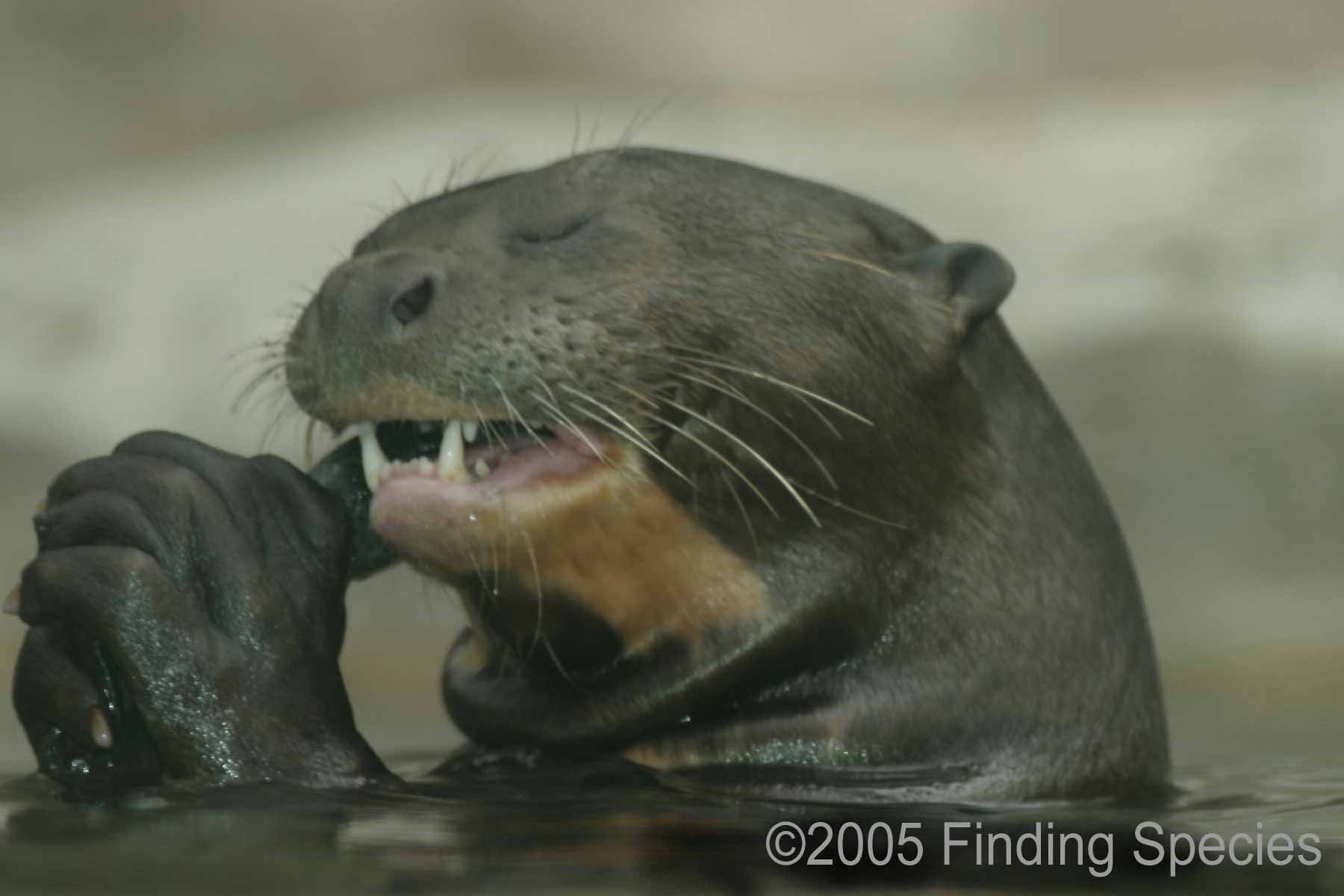Giant Otter (Pteronura brasiliensis) Classification: Class: Mammalia, Order: Carnivora, Family: Mustelidae, Genus: Pteronura, Species: brasiliensis
IUCN Status: Endangered
Known to local peoples as the “river wolf,” this species is critically endangered in Ecuador. This is the most serious distinction in the IUCN’s classification system, the international standard for establishing the conservation status of a given species. As the name indicates, the Giant Otter is the world’s largest otter species. Giant Otters have velvety, reddish-brown, waterproof fur and have a cream-colored patch on their chests. The Giant Otters' long sinewy bodies, webbed feet, and rudder-like tails make them strong swimmers. They use their large eyes and whiskers to detect fish, which make up the vast majority of their diets.
Giant Otters are found in the Orinoco, Amazon, and La Plata river systems in South America. They thrive in slow moving rivers, lakes, ponds, and wetlands, and they prefer gently sloping banks/shores with overhanging vegetation. Despite their poor mobility out of the water, they are known to travel long distances over land. Except for humans, they have no known predators.
These otters live in family groups known as “holts” that consist of a breeding pair and 1 to 7 offspring. Families spend the night together in dens, which they construct under fallen logs or root systems. They also share a communal latrine that is used to mark the family’s territory. The entire family cares for new offspring, which are independent by 9 months, although they do not leave the den until they reach sexual maturity at about age 2.
The Giant Otter’s recent population crash has occurred for several reasons. From 1940 to 1970, the Giant Otter was hunted heavily for its valuable fur. Trading this fur was made illegal by the Convention on International Trade of Endangered Species (CITES), although illegal hunting still occurs. They tend to be curious animals, which makes them easy targets. Exotic diseases have also been a problem. However, the main threats to the species today are habitat loss and pollution. Heavy metals from mining operations (especially mercury) are released into the water and accumulate in the Giant Otters’ bodies. Logging operations and road building cause erosion, which increases sediment in rivers. This increases the murkiness of the water and affects fish and, therefore, Giant Otter populations. Oil spills have also been a problem.
There are less than 250 sexually reproductive individuals in Ecuador. Some of the highest concentrations of this species are found in Yasuní, which holds approximately 100. The proposed Petrobras road would cross one of the Giant Otter’s most frequently used rivers in the park, and its construction zone would be right next to a confirmed population group. The site's location poses a high risk of erosion and oil leakage into their habitat.
(http://www.iucnredlist.org/search/details.php?species=18711)
(http://www.arkive.org/species/GES/mammals/Pteronura_brasiliensis/more_info.html)
CLICK HERE FOR MORE EXTRAORDINARY
ANIMALS and PLANTS OF YASUNÍ,
THE MOST BIODIVERSE FOREST KNOWN ON EARTH
Yasuní Biodiversity Main Page
|

